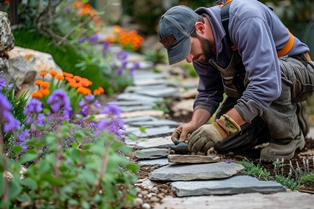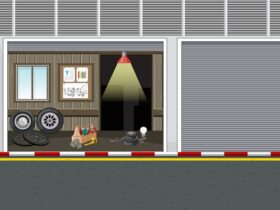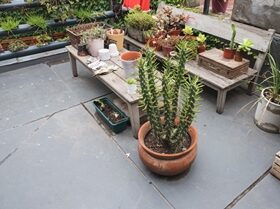Welcome to our comprehensive guide on garden edging! Garden edging is an essential aspect of landscaping that often goes overlooked, yet it plays a crucial role in defining the boundaries of your garden beds, enhancing the aesthetic appeal of your outdoor space, and simplifying maintenance efforts. Whether you’re a seasoned gardener or a novice enthusiast, understanding the importance of garden edging and implementing the right techniques can transform your garden into a picturesque oasis.
Why Garden Edging Matters
Enhance Curb Appeal
First impressions matter, and the exterior of your home sets the tone for your property. Garden edging serves as the perfect frame for your landscape masterpiece, creating clean lines that accentuate the beauty of your plants and flowers. With well-defined borders, your garden beds will exude sophistication and charm, instantly elevating your curb appeal.
Maintain Garden Structure
Beyond aesthetics, garden edging serves a practical purpose by maintaining the structure of your garden beds. By containing soil and mulch within designated areas, edging prevents erosion, soil compaction, and the encroachment of grass and weeds. This not only preserves the integrity of your garden but also reduces the need for frequent maintenance, allowing you to enjoy your outdoor oasis with minimal effort.
Define Functional Spaces
Garden edging enables you to delineate functional spaces within your landscape design. Whether you’re creating pathways, separating different plant varieties, or bordering vegetable gardens, edging provides clear boundaries that organize and optimize your outdoor space. By strategically incorporating edging elements, you can maximize usability and create a cohesive layout that reflects your personal style and preferences.
Types of Garden Edging Materials
Brick Edging
Brick edging offers timeless elegance and durability, making it a popular choice for traditional and contemporary gardens alike. With its versatility in design and color options, brick edging seamlessly integrates into various landscape styles, from formal gardens to rustic retreats. Additionally, brick edging withstands weathering and provides a stable barrier against grass and soil movement.

Stone Edging
Natural stone edging exudes rustic charm and adds a touch of organic beauty to your garden. Whether you opt for irregularly shaped stones for a rugged aesthetic or smooth, polished stones for a more refined look, stone edging complements natural landscapes and architectural features. Moreover, stone edging offers longevity and requires minimal maintenance, making it a sustainable choice for eco-conscious gardeners.

Metal Edging
For a sleek and modern appeal, metal edging delivers contemporary flair and structural integrity to your garden design. Typically made of aluminum, steel, or corten steel, metal edging offers crisp lines and a minimalist aesthetic that suits urban gardens and minimalist landscapes. With its resistance to corrosion and flexibility in shaping, metal edging provides long-lasting performance and withstands environmental elements with ease.

Wood Edging
Wood edging imparts warmth and character to your garden, evoking a sense of rustic charm and natural beauty. Whether you prefer treated timber for enhanced durability or untreated wood for a more organic look, wood edging complements a variety of garden styles, from cottage gardens to woodland retreats. Additionally, wood edging is easy to install and allows for creative customization, making it an ideal choice for DIY enthusiasts.

Plastic Edging
Plastic edging offers affordability and versatility, making it a practical solution for budget-conscious gardeners and large-scale landscaping projects. Available in a range of colors and designs, plastic edging provides flexibility and ease of installation, allowing you to customize your garden borders with minimal effort. While plastic edging may lack the aesthetic appeal of natural materials, it offers durability and weather resistance, ensuring long-term performance in diverse outdoor conditions.
Tips for Successful Garden Edging
Plan Your Design
Before embarking on your garden edging project, take time to plan your design and layout. Consider the size and shape of your garden beds, the surrounding landscape features, and your desired aesthetic preferences. By visualizing your design and mapping out the placement of edging materials, you can ensure a cohesive and harmonious result that complements your overall landscape vision.
Choose the Right Materials
Selecting the appropriate edging materials is essential for achieving both aesthetic appeal and functionality. Evaluate the durability, maintenance requirements, and compatibility with your garden style before making your decision. Whether you opt for natural stone for a rustic look or metal edging for a contemporary feel, choose materials that align with your design goals and withstand the unique challenges of your outdoor environment.
Install Properly
Proper installation is critical for the longevity and effectiveness of your garden edging. Ensure that edging materials are securely anchored in place and properly aligned to create clean, straight lines. Use appropriate tools and techniques to excavate soil, level edging elements, and secure joints for a seamless finish. By following manufacturer guidelines and professional installation tips, you can achieve professional results that enhance the beauty and functionality of your garden landscape.
Maintain Regularly
Like any other aspect of your garden, edging requires regular maintenance to preserve its appearance and effectiveness over time. Inspect edging materials for signs of wear, damage, or shifting, and address any issues promptly to prevent further deterioration. Remove debris, weeds, and grass encroachment regularly to keep your garden borders clean and well-maintained. By investing time and effort in routine maintenance, you can extend the lifespan of your garden edging and enjoy lasting beauty in your outdoor space.
FAQs
Here are some FAQs related to Garden edging expert gardenedgingexpert.com
The cost of garden edging varies depending on the materials used, the size of the project, and other factors. On average, homeowners can expect to spend between $500 and $2,500 on garden edging.
The lifespan of garden edging depends on the materials used and the level of maintenance performed. With proper care, most garden edging materials can last anywhere from 5 to 20 years or more.
Many garden edging materials are relatively easy to install and can be done DIY-style with basic tools and equipment. However, if you’re not confident in your abilities or have a large or complex project, it may be worth hiring a professional landscaper.
Here’s a concise list of the benefits of garden edging:
Defines garden boundaries clearly.
Prevents soil erosion.
Controls weeds by creating a barrier.
Contains mulch or gravel within designated areas.
Separates different types of plants or garden elements.
Enhances the overall aesthetics of the garden.
Facilitates easier maintenance, such as mowing and trimming.
Provides safety by delineating pathways and garden areas.
Adds structure and organization to the landscape design.
Increases property value by improving curb appeal.
Yes, there are several eco-friendly options for garden edging, including recycled plastic, reclaimed wood, and natural stone sourced from sustainable quarries. These materials offer the same durability and aesthetic appeal as traditional options while minimizing environmental impact.
A height of 4 to 6 inches (10 to 15 cm) is generally best for garden edging, balancing functionality and aesthetic appeal.
The cheapest type of edging is typically basic plastic or metal landscape edging.
The best type of garden edging depends on factors like budget, aesthetics, and function. Common options include plastic, metal, wood, and stone.
Edging in landscaping refers to the process of creating a defined border between different elements within the landscape, such as between lawn and garden beds or between different types of ground cover. It involves installing materials like bricks, stones, metal, plastic, or wood along the edges of these areas to create a clear separation. Edging serves both functional and aesthetic purposes, including defining boundaries, preventing soil erosion, controlling weeds, and enhancing the overall appearance of the landscape.
Conclusion
Garden edging is a fundamental element of landscape design that enhances the beauty, structure, and functionality of your outdoor space. By implementing the right techniques and choosing suitable materials, you can create stunning garden borders that elevate your curb appeal and simplify maintenance efforts. Whether you prefer the timeless elegance of brick or the contemporary flair of metal, there are endless possibilities to explore in garden edging. With careful planning, proper installation, and regular maintenance, you can achieve professional results that transform your garden into a captivating oasis for years to come.











Find Us on Socials